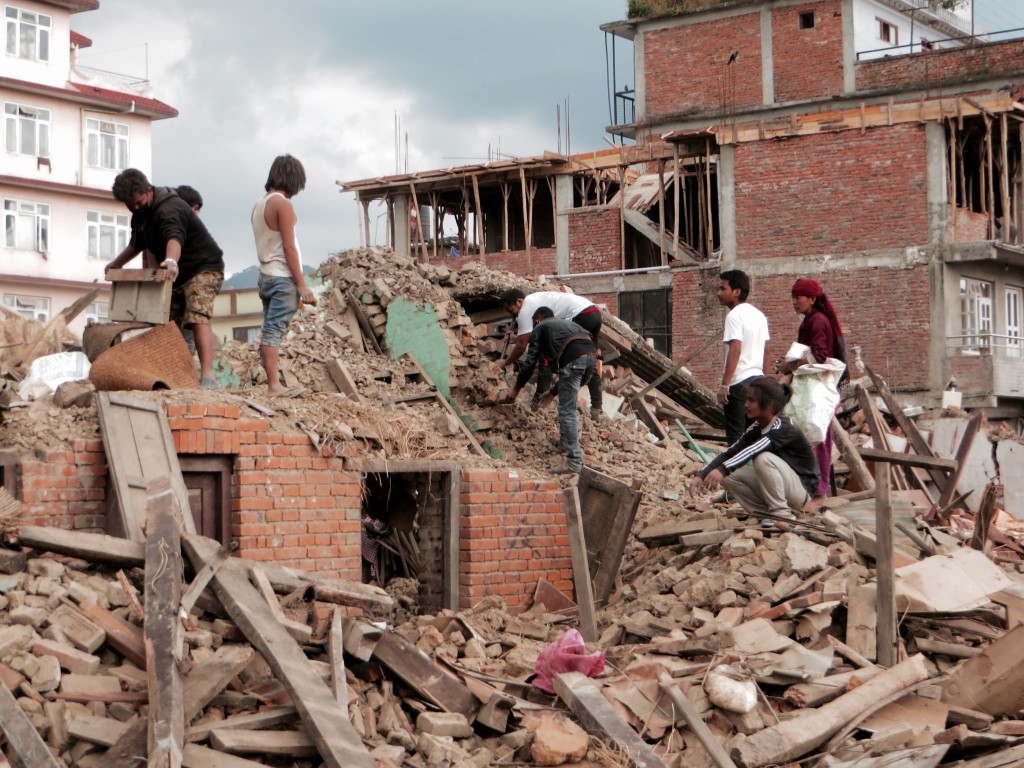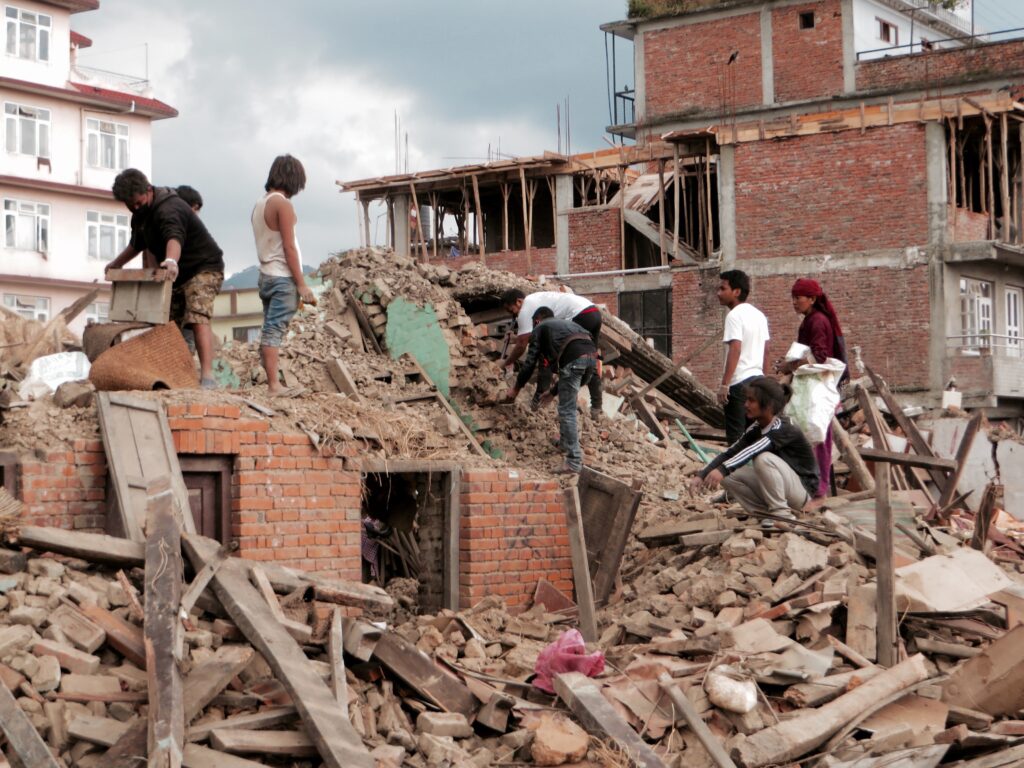
Just a week before the tragic earthquake in Nepal, a group of earthquake specialists gathered in the capital, Kathmandu, to discuss how to prepare the region for the impending “big one”. For decades, experts have warned that the whole Himalayan region was at risk. Unfortunately, due to Nepal’s underdevelopment, there were no earthquake warning systems or earthquake resistant building codes in effect on April 25.
There is a reactionary mentality to earthquakes; most governments simply implement response mechanisms rather than measures to mitigate potential damage. While humanitarian operations have improved significantly in recent years thanks to technological innovations, the current policy approach toward earthquakes is unsustainable. Massive earthquakes are not freak disasters; they occur relatively frequently across the globe, leaving developing countries most at risk (e.g., Indonesia, Chile and Haiti).
Contrary to popular opinion, the approximate location and intensity of earthquakes can be predicted. Scientists are even developing estimated timeline technology. Armed with this promising research, the global community needs to aid developing countries in becoming equipped with the necessary technology, warning systems and architectural knowledge to mitigate earthquake damage. Japan is a clear example of an immensely successful proactive approach to earthquakes, regularly withstanding massive earthquakes above 7.0-magnitude. There is no excuse for the international community not cooperating on earthquake preparedness as it has on issues such as disease and poverty.
The New York Times’ Wednesday headline blared that the earthquake revealed the “hubris and imbalance” on Mount Everest, Nepal’s main attraction for foreigners. However, the climbing world has known about the appalling and embarrassing racial politics on Everest for decades.
Western adventure seekers often pay tens of thousands of dollars to join guided expeditions up Everest. These expeditions cheaply hire local Nepali Sherpas to haul gear while treating the Sherpas as second-class citizens. Sherpas break trails on the most dangerous parts of the mountain–places like the Khumbu Icefall, a glacial river of ice, where crevasses miles into the earth shift day by day. Sherpas on Everest have incredibly high death rates, higher even than US soldiers operating in Iraq from 2003 to 2007.
Himalayan expeditions have been unequal since Westerners started summiting Everest. At the start of the 1953 expedition, when Sir Edmund Hillary (a New Zealander) and Tenzing Norgay (a Nepali Indian) first stood atop the world, the Western climbers were given bunks in the homes of British embassy staff in Kathmandu, while the 20 Sherpas were offered a place on the garage floor of the embassy. After the expedition, the Queen knighted Sir Edmund Hillary for his successful summit, but did not bestow the same honor upon Sherpa Tenzing Norgay.
Nepal is an underdeveloped country, but with the Himalayan climbing industry becoming increasingly popular in recent decades, there is no reason for Nepal to remain destitute. Paying living wages to Sherpa guides and treating them with the respect they deserve is an important first step.
With over 6,000 dead and 14,000 wounded, Nepal has suffered its greatest natural disaster of the century. Earthquakes in this region are not surprising, since the country lies directly on a fault line. Location, however, may not have been the only cause of Saturday’s tragedy.
Each year, the monsoon season brings heavy rainfall over the Himalayas, gathering in rivers basins in India and Bangladesh. The seasonal influx and outflow of rainwater weighs down the Indian subcontinent’s tectonic plate and builds potential energy along its edges. Over the weekend, this tension may have contributed to the Indian plate slipping under the Eurasian plate, causing the fatal earthquake. When climate change interferes with the natural magnitude of monsoon season in South Asia, this externality creates greater sensitivity between the two plates.
Geologists are predicting an increased frequency in earthquakes and volcanic action in the years to come. According to a team at University College London, humanity will face a series of “extreme geological events” in the near future. Simply put, changing weather patterns and the melting of major ice caps will lead to a massive displacement of water and weight, triggering abrupt seismic activity. There is no way to pinpoint exactly where these disasters will occur, but the Himalayas are among those regions most at risk.
This week, and for many thereafter, the international community must extend its prayers and support to those in Nepal. What this disaster has taught us is that the effects of climate change are no longer limited to the weather and will come at a great cost.
The earthquake in Nepal has brought the small country into the spotlight, and the picture is atrocious. Stratfor, a global intelligence company, made its assessment of Nepal’s geographical challenges available for free in the wake of the quake. On a seismically calm day, Nepal would probably still look incredibly disorganized and largely undeveloped. Nepal is landlocked high in the Himalayas, and its weak economy is heavily dependent on foreign tourists who want to see places like Mount Everest or to experience the local culture. A natural disaster is the last thing this tenuously positioned, poor and ill-governed country needed.
Vice News has been releasing video dispatches from Nepal, which show that the problems facing Nepalis in cities like Kathmandu and in small villages across the countryside are multitudinous. The government cannot help them all, even with the millions of dollars, tons of supplies and thousands of volunteers pouring into the country. Even the best organized recovery efforts would take years to get Nepal back to where it was before the quake–and that isn’t a very desirable state to be in anyway. Nepal’s recent history is rife with tragedies. Perhaps this one can be turned into an opportunity to build a country the right way. Their future survival might depend on it.
In the midst of a humanitarian crisis, politics has not disappeared. Consider the fact that on Monday, Nepal rejected an offer from Taiwan to send a rescue team, citing a desire to “prioritize help from neighboring countries.” Yet, the facts speak otherwise: search and rescue teams have also arrived from countries as far away as the US, Finland and Israel. The Nepali government appears to be prioritizing its belief in “One China” possibly at the expense of those affected by the quake.
China and India seem to be vying to win the hearts of the Nepali people, many of whom are frustrated by their own government’s slow relief response. China has dispatched 300 aid personnel; the Indian Air Force alone has sent 950 personnel and provided 400 tons of aid. Why? Both countries have significant geopolitical interests in the small country. China needs Nepal as an ally against the Tibetan independence movement. India needs Nepal to serve as a buffer against China. However, India has continuously failed to maintain healthy relations with the Nepali government. Perhaps this is why its aid has been so substantial and so quick; this is possibly one of New Delhi’s fastest and most expensive responses to a natural disaster in the region.
As Nepal recovers and begins reconstruction efforts moving forward, both India and China will make politico-economic moves to maintain influence. This soft power battle for the two regional hegemons to woo Nepal should be in the small country’s benefit. Let’s hope that the aid war going does not further hurt the many victims of the quake.
Correction: The previous version of Erin’s response mistakenly referred to the newly researched connection between increased monsoon rainfall and more frequent earthquakes as fact. The article has been corrected to reflect the doubt in the scientific community as to the validity of that conclusion.
The views expressed by the author do not necessarily reflect those of the Glimpse from the Globe staff, editors, or governors.







